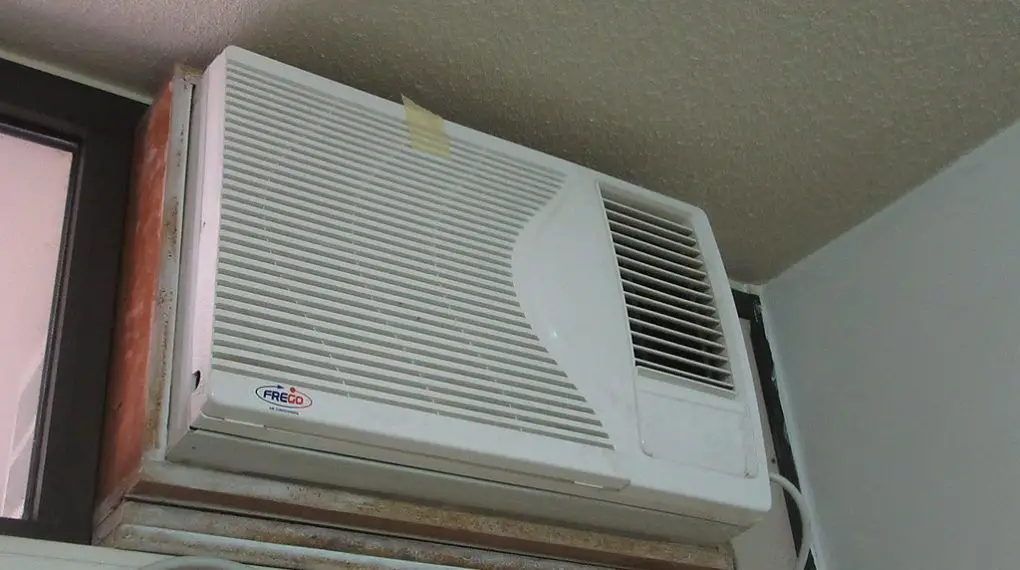SEER rating of old air conditioners – sounds technical, doesn’t it? In this article, we’ll reveal this secret language of your air conditioner.

Table of Contents
Overview of the SEER Rating of Old Air Conditioners
The Seasonal Energy Efficiency Ratio (SEER) rating serves as a measure of an air conditioner’s efficiency. Specifically, it calculates the cooling output during a typical cooling season divided by the total electric energy input during the same period.
The higher the SEER rating, the more energy-efficient the unit is. However, when it comes to older air conditioners, they generally fall on the lower end of the SEER scale. Let’s expand further on this.
SEER Ratings in the Context of Older AC Units
Older air conditioners, specifically those installed prior to the 1990s, generally have a SEER rating below 10 due to less advanced technology and efficiency standards at the time of their manufacturing. This means they consume more energy to produce the same amount of cooling as an air conditioner with a higher SEER rating.
In contrast, newer air conditioning units as of the mid-2000s and beyond, must meet a minimum SEER rating of 13 (in the United States) by law, and many modern units have SEER ratings ranging from 15 to over 20. This improvement over the years has largely been a result of advancements in technology and changes in energy efficiency regulations.
Implications of Lower SEER Ratings
A lower SEER rating means that the air conditioner is less efficient and consumes more energy to provide the same cooling effect, which can lead to higher energy costs over time. It’s a bit like comparing a gas-guzzling old car to a modern hybrid vehicle. They can both get you to your destination, but one will use considerably more fuel (and money) to do so.
Moreover, older air conditioners with low SEER ratings might not cool your home as effectively, particularly on very hot days or if the system hasn’t been well-maintained. They can also be louder and less environmentally friendly due to higher greenhouse gas emissions.
Upgrading to a Higher SEER Air Conditioner
Given these drawbacks, you might want to consider replacing an older, less efficient air conditioner with a newer, high-SEER model. Yes, the upfront cost can be significant, but you will often make up for it over time through reduced energy bills.
Plus, you’ll likely benefit from improved cooling performance, quieter operation, and a reduced carbon footprint—advantages that make the investment worth considering.
Check out these other related articles…
SEER Rating of Portable Air Conditioners: Easy Guide
ISEER Rating Calculation: Explained
SEER Rating Changes: Your Ultimate Guide
European Seasonal Energy Efficiency Ratio (ESEER)
SEER Rating vs Ton: Discover the Differences
SEER Ratings of Old Air Conditioners Over Time
Seasonal Energy Efficiency Ratio (SEER) ratings have been rising over the years due to technological advancements and stricter energy efficiency regulations. In essence, SEER ratings of air conditioners can help us trace the progress of energy efficiency in HVAC technology over the years.
Now, let’s break down what this looks like at various time intervals.
SEER Rating of 30-Year-Old Air Conditioners
Let’s journey back to 30 years ago. At this point, you might find air conditioners with a SEER rating of around 6-8. This is significantly lower than what we’d see today.
While it might be nostalgic to think of older appliances as rugged and durable, unfortunately, in terms of energy efficiency, they were not that impressive. Using such a system today would mean higher electricity bills and a larger carbon footprint, compared to modern AC units.
SEER Rating of 25-Year-Old Air Conditioners
If you have a quarter-century-old AC unit, it might have a slightly better SEER rating, hovering around 8-10. However, this number can vary based on the specific model and how well it’s been maintained.
Regular maintenance and cleaning can help keep an air conditioner functioning closer to its original efficiency, but it’s still likely to lag behind modern models significantly.
SEER Rating of 20-Year-Old Air Conditioners
Twenty years ago, the average SEER rating saw another small increase, typically in the range of 10-12. The exact rating will again depend on the model and its maintenance history.
Around this time, energy efficiency began receiving more attention, leading to regulations that steadily raised the minimum SEER rating for new air conditioners.
SEER Rating of 15-Year-Old Air Conditioners
Fast forward to just 15 years ago, the average SEER rating of air conditioners was approximately 12-13. The increase in SEER ratings over time is apparent here.
This was also around the time when the U.S. Department of Energy mandated that all new residential central air conditioners sold must have a SEER rating of 13 or higher, further encouraging advancements in energy efficiency.